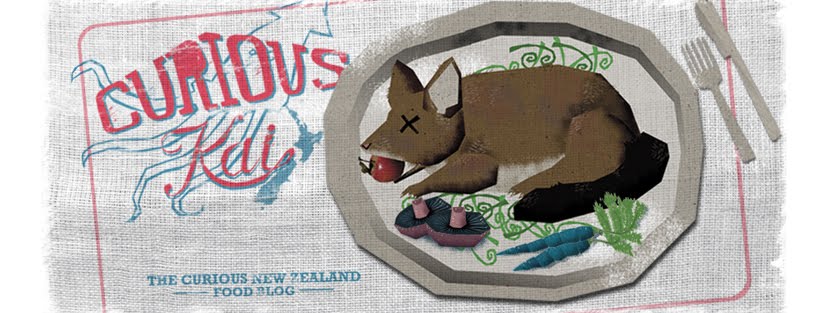
While not possessing the most appealing of names, clotted cream is an important and revered delicacy, as quintessentially English as Irish stew and Welsh rarebit. Used as an accompaniment for puddings and pies, it is most widely known as being the key component in a traditional cream tea: scones, jam, clotted cream and a pot of tea.
But what actually is it? Made traditionally in the south west of Britain (think Devon and Cornwall), it is a thick, rich yellow-coloured cream, made by subjecting unpasteurised cows milk to heat until the cream rises to the surface, forming a slight golden crust. Once cooled, the clots of cream are then skimmed from the top. Its importance to the UK is such that it enjoys EU-sanctioned protected status, similar to France and its rights to the name of Champagne. Did you know it was one of the last meals served to passengers on Concord's final flight around the world? True...
I'm quite partial to tea, scones and jam, and I've never come across it here in NZ so it was logical to pursue clotted cream as an experiment. There are a wealth of recipes available to try, but this one was the most straight forward (from an old Aunt Daisy cookbook). Off to the Kai lab!
You will need two parts milk to one part cream; here, I used one litre of full cream milk (whole milk) and a 500ml bottle of cream.

Pour the milk and cream into a bowl or pot and leave overnight in the fridge to allow the cream to rise to the top. The creamy layer that forms will be quite substantial.

Remove the bowl of cream from the fridge and place over a pot of boiling water. Reduce to a simmer.

Over the course of an hour you'll see the surface of the cream start to form a yellow skin; it will also start to form sporadic bubbles (that's bubble, not boil - if it boils, you've got it far too hot).

After an hour, which according to my recipe should be sufficient cooking time, it should look like the photo below - quite a substantial frothy yellow crust. Take it off the pot and place it in the fridge to cool.

Once cool, carefully skim the clotted cream off the surface.
And there you go! Isn't it lovely, all yellow and rich! It tastes as you'd expect cream to taste, with the added sensation of more substance and body, compared to say, whipped cream. Consequently, it's a little richer too...

...and the perfect compliment to scones and jam. Don't use butter - my god, it's rich enough as it is - if you do, the little man who calculates your health insurance premiums will hear your arteries change down a gear to accomodate the load, mark my words. Apparently, I've served this backwards - it's meant to be cream first, then jam - regional bias apparently, although if your scones are still warm from the oven, cream first would result in it dripping all over the place. Until I get to the UK and spend a warm spring afternoon with a proper cream tea at an English tea room, this will have to do. Time for more tea - pip pip!

Oh, by the way - the leftover milk? Use it to make rice pudding. I won't give you a recipe because you must have one somewhere surely. Failing that, just ask the internet. Bye bye.
Interesting links:
Simple DIY clotted cream (made with mascarpone) clickety
Wikipedia clickety
Background on Devonshire cream teas clickety
Click on the photo that opens this post - it really does look quite grand!
















